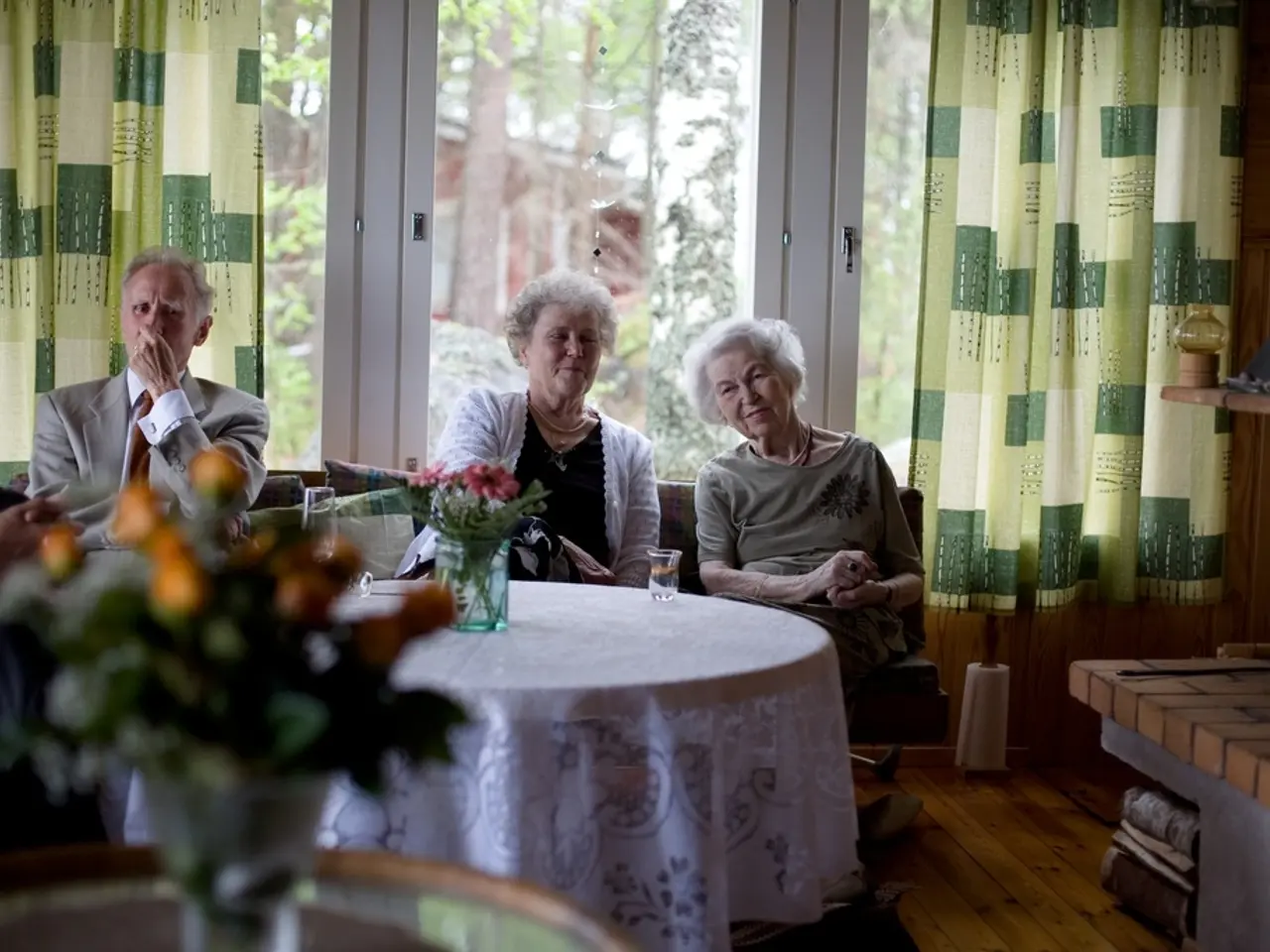Removal of Dementia Sufferers from Their Surroundings
In the journey of life, the human brain plays a crucial role in calculating the distance between itself and its surroundings. However, for individuals living with dementia, this perception of living space can differ significantly [1]. To ensure a smooth transition for these individuals, it's essential to understand concepts like Transfer Trauma and lived space.
First coined by Tracy Greene Mintz, Transfer Trauma refers to the stress experienced by older adults moving to long-term care facilities, extending beyond the general relocation stress [2]. This emotional turmoil can manifest in symptoms such as anxiety, depression, loneliness, screaming, irritability, complaining, and difficult behavior.
Understanding the concept of lived space is crucial for creating a better living environment for dementia-affected individuals. French Marxist philosopher and sociologist Henri Lefebvre introduced the concept of "lived space" and "lived experience," delving deeper into the human experience of life [3]. Lefebvre's work was further explored by Max Van Manen, who studied the concept of lived space and lived experience in detail.
When relocating a dementia patient, it's important to redesign their new living space to cater to their unique needs. Simplifying and decluttering the environment can reduce confusion and overwhelm caused by too much visual or physical clutter [4]. Ensuring adequate and well-distributed lighting, avoiding harsh fluorescents, and using nightlights or motion-sensor lights can prevent falls and reduce agitation.
Labeling rooms, drawers, and cabinets with clear words and pictures aids recognition and supports independence. Securing potential hazards by locking cabinets containing dangerous items, removing sharp objects, and securing toxic substances keeps everyone safe while keeping frequently used items accessible.
Use of safety modifications such as grab bars in bathrooms, non-slip mats in tubs/showers, raised toilet seats, and shower chairs enhances safety and supports daily activities. Maintaining familiar furniture arrangements and keeping important items consistently in the same places reduces disorientation.
Applying contrasting colors on surfaces and objects improves visibility, while creating safe walking paths free of obstacles allows free movement and reduces fall risk. Modifying electrical elements, such as lowering light switches and raising outlets for accessibility, and ensuring working smoke, fire, and carbon monoxide detectors, ensures safety.
Securing exterior doors with locks placed out of sight, door alarms, or slide locks on off-limits rooms in a way that does not cause agitation or feelings of confinement is also important. In bedrooms, consider adjustable beds, proper bed height, and enough space for wheelchair or walker use, along with easy-to-access storage.
These adaptations collectively promote safety, support independence, reduce stress, and help manage wandering behaviors in dementia patients during and after relocation. By creating an air of familiarity in a new home, such as carrying some older items, maintaining similar wall colors and textures, and placing objects in familiar positions, one can help ease the transition for those affected by dementia.
Lastly, it's beneficial to have a common room where everyone can gather in the evening to socialize, fostering a sense of community and belonging. These measures, when combined, can make a significant difference in the lives of dementia patients, enabling them to live autonomously with the advancement of medicine and technology.
References: [1] [The human brain calculates the distance between itself and its surroundings, and this perception of living space can differ for dementia patients.] [2] [Tracy Greene Mintz coined the term "Transfer Trauma" for older adults moving to long-term care facilities.] [3] [Lefebvre's book, "Researching Lived Experience", delves into the human experience of life.] [4] [To make a home dementia-friendly when relocating a dementia patient, follow these key tips:]
- Dealing with dementia can result in a significantly different perception of living space compared to those without it.
- Transfer Trauma, first coined by Tracy Greene Mintz, is the stress experienced by older adults moving to long-term care facilities, beyond the general relocation stress.
- Understanding the concept of lived space is critical for creating a better environment for dementia-affected individuals.
- Lived space and lived experience were delved into by French philosopher Henri Lefebvre, with further exploration from Max Van Manen.
- Simplifying and decluttering the environment can reduce confusion and overwhelm for dementia patients.
- Adequate lighting, avoiding harsh fluorescents, and using nightlights or motion-sensor lights can prevent falls and reduce agitation.
- Labeling rooms, drawers, and cabinets with clear words and pictures aids recognition and supports independence for dementia patients.
- Safety modifications, such as grab bars, non-slip mats, raised toilet seats, and shower chairs, are essential for increasing safety and supporting daily activities.
- Contrasting colors on surfaces and objects, along with free walking paths, can enhance visibility and reduce fall risk.
- Securing potential hazards, modifying electrical elements, and having working smoke, fire, and carbon monoxide detectors ensure safety in the living space.
- Adapting exteriors with locks out of sight, door alarms, and slide locks can address concerns about feeling confined or secure interior spaces.
- Fostering community and belonging is important, such as providing a common room for socializing in the evenings, and these measures, when combined, can make a significant difference in the lives of those living with dementia.




